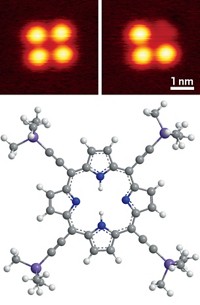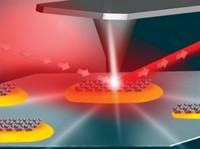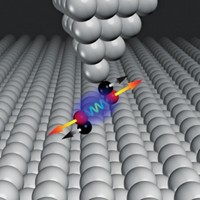Advertisement
Grab your lab coat. Let's get started
Welcome!
Welcome!
Create an account below to get 6 C&EN articles per month, receive newsletters and more - all free.
It seems this is your first time logging in online. Please enter the following information to continue.
As an ACS member you automatically get access to this site. All we need is few more details to create your reading experience.
Not you? Sign in with a different account.
Not you? Sign in with a different account.
ERROR 1
ERROR 1
ERROR 2
ERROR 2
ERROR 2
ERROR 2
ERROR 2
Password and Confirm password must match.
If you have an ACS member number, please enter it here so we can link this account to your membership. (optional)
ERROR 2
ACS values your privacy. By submitting your information, you are gaining access to C&EN and subscribing to our weekly newsletter. We use the information you provide to make your reading experience better, and we will never sell your data to third party members.
Analytical Chemistry
Molecular Electric Motor Unveiled
by Stu Borman
September 12, 2011
| A version of this story appeared in
Volume 89, Issue 37
The future of nanotech devices looks brighter now that single-molecule electric motors have been developed by chemists at Tufts University. Molecular motors powered by light and chemical reactions have been made before, but no electrically driven ones had been devised, despite theoretical predictions that such devices would be feasible. Charles Sykes and coworkers developed their single-molecule electric motor by using electrons from the asymmetric tip of a low-temperature scanning tunneling microscope (STM) to drive rotation of an asymmetric butyl methyl sulfide molecule adsorbed on a copper surface at 5 K (Nat. Nanotechnol., DOI: 10.1038/nnano.2011.142). Although the rotation is in both directions and thus has some randomness to it, there is a slight preference for one direction over the other, making it possible for the motor to perform useful work. Sykes’s group confirmed the preferential motion by using STM to monitor each rotational event in real time. Herre S. J. van der Zant of Delft University of Technology, in the Netherlands, comments that the work is “a fundamental study aimed at understanding how to drive and measure motion at a nanometer scale. Practical applications are still far away but may involve lab-on-a-chip products.”





Join the conversation
Contact the reporter
Submit a Letter to the Editor for publication
Engage with us on Twitter